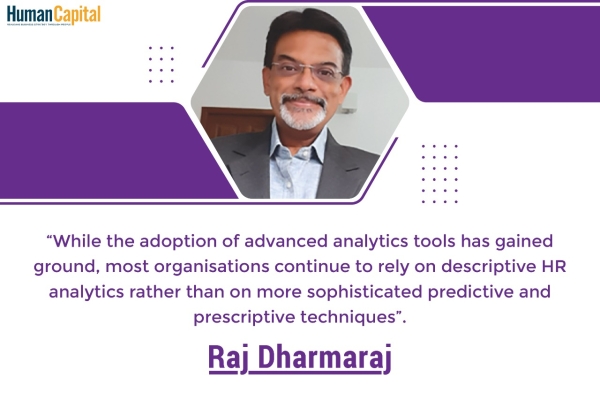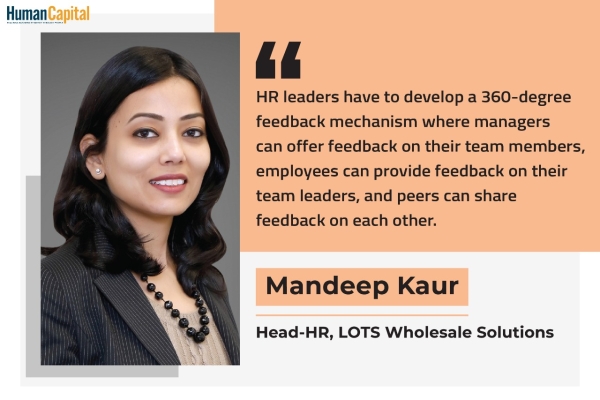David Ogilvy spoke about hiring giants to become a company of giants. While this phrase has never rung truer than it does today, I do believe in the power of not only hiring giants, but also in nurturing and growing them internally. Any organisation stands on two pillars - people and profit. While a strong focus on business strategy and the bottom line is imperative, culture is a nurturing habitat for success. And come rain or hay, an organisation that propagates the right kind of culture top-down is indeed blessed with good fortune.
Policies For The People, Of The People, By The People
I have seen life as a leader in the Human Resources and People Practices space - from the Tatas to Jubilant, and from the Oberois to Aircel. What I have noticed in the last 30 plus years of my experience is that policies evolve to cater to a diverse employee base, both geographically and in terms of age. Organisations such as the Tatas adopted and implemented the progressive concept of paternity leave very early on. Jubilant, on the other hand, constantly works on talent management and succession planning. At Aircel, we had an open-door policy, and the Oberois are known for their employee friendly culture.
Best Talent Management Practices
The Tatas: Adopted and implemented the progressive concept of paternity leave very early on
Jubilant: constantly works on talent management and succession planning
Aircel: Maintained an open-door policy
The Oberois: Have always been known for their employee-friendly culture
When I say 'growing a giant' what I essentially mean is building a high performance culture through policies that encourage employees to not only work hard for remuneration, but also feel motivated to get out of bed and come to work every day. Imagine, if each person really took ownership of the business, there will not be one, but a hundred CEOs in each organisation.
Building A High-Performance Culture
Sustained business success requires high-performing organisations. The only way for an organisation to classify in that category is to build a highperformance culture. The question is, how?
Talent Management: While acquiring great talent is of course necessary, talent management is the key to maintaining the said talent. Organisations with a focus on talent management produce more engaged, skilled, and productive employees. What makes an individual stay in an organisation is not only the motivation of a handsome salary and an attractive appraisal, but also professional and personal development. A unified talent management strategy helps build and nurture talent through an organisational as also an individual growth perspective.
Manage culture, do not let it manage you: In organisations that are spread across the world, cultural differences gain critical importance. Organisational culture transcends boundaries. An excellent example of this would be Google. With offices in almost every country in the world, the brand has been able to create a culture that signifies a sense of ownership and belonging. No matter the area, a Google employee, from the CEO to an executive, is a 'Googler'. This is what that makes Google, for a lot of people, a 'dream company' to work for. Geographical differences aside, when people from different states and countries come together to belong, it implies that the company has truly succeeded in creating and managing a unified culture. And it is this culture that eventually leads to high performing organisations.
From a facilitator to business partner: Today, the function of human resources is connected with every other function in an organisation. It is the very wheel around which the spindles rotate. HR has evolved and continues to evolve from being merely a facilitator for hiring to being a strategic business partner. It even defines the leadership style in an organisation. As with every other sector and industry, human resources as a function is playing catch-up with technology, millennials, the start-up culture, and the continuously evolving market dynamics. It is only when brands embrace this shift that the high-performance culture I have been raving about will come to be.
As the custodian of the organisation and its people, HR needs to not only hire giants but also grow them internally, using all possible tools at their disposal. Everything from mentorship, to succession planning, to career development, to L&D et al. - all the talent management tools - need to be deployed, along with a deep understanding of human behaviour and voila! We have the perfect recipe for building a high-performance culture. What more do we need as an organisation?

Is your organisation post-COVID-ready?
Trending
-
SBI General Insurance Launches Digital Health Campaign
-
CredR Rolls Out 'Life Happens' Leave For Its Employees
-
Meesho Announces 30-Week Gender-Neutral Parental Leave Policy
-
Microsoft Unveils Tech Resilience Curriculum To Foster An Inclusive Future
-
60% Indian Professionals Looking For Job Change Due To COVID: Survey
-
SpringPeople And Siemens Collaborate For Digital Transformation Push
-
86% Professionals Believe Hybrid Work Is Essential For Work Life Balance: Report
-
Almost 1 In Every 3 People's Personal Life Affected Due To Work Stress
-
Meesho Rolls Out Reset And Recharge Policy For Employees
-
80% Of Talent Leaders & Academics Say Pandemic Changed Skill Needs For Youth: Report
-
Hero Electric Rolls Out 'Hero Care' Program For Employees
-
Human Capital In Collaboration With ASSOCHAM Hosts Virtual Conference
-
IKEA India, Tata STRIVE Collaborate To Create Employability And Entrepreneurship Opportunities
-
SAP India, Microsoft Launch Tech Skilling Program for Young Women
-
DXC Technology, NASSCOM Collaborate For Employability Skills Program
-
Lenskart To Hire Over 2000 Employees Across India By 2022
-
Mindtree Launches Learn-and-Earn Program
-
Tata AIA Extends 'Raksha Ka Teeka' To Its Employees
-
Swadesh Behera Is The New CPO Of Titan
-
NetConnect Global Plans To Recruit 5000 Tech Professionals In India
-
Hubhopper Plans To Hire 60% Of Indian Podcasters By 2022
-
Corporate India Needs More Women In Leadership Roles: Report
-
Aon to Invest $30 Million and Create 10,000 Apprenticeships by 2030
-
Tech Mahindra Launches ‘Gift a Career’ Initiative for Upskilling of Youth
-
40% Women Prefer Flexible Working Options in Post-COVID World: Survey
-
3 out of 4 companies believe they can effectively hire employees virtually: Report
-
Vodafone , CGI and NASSCOM Foundation launch digital skills platform
-
Odisha: Bank, postal employees to deliver cash for elderly, differently-abled persons
-
Skill India launches AI-based digital platform for "Skilled Workforce"
-
Hiring activity declines 6.73% in first quarter: Survey
-
70% startups impacted by COVID-19 pandemic
-
Bajaj Allianz Life ropes in Santanu Banerjee as CHRO
-
Over 70 Percent MSMEs look at cutting jobs to sustain businesses
-
93 Per Cent employees stressed about returning to office post-lockdown
-
Johnson & Johnson India announces family benefits for same gender partners
-
Indian firms turning friendly towards working mothers
-
Welspun India names Rajendra Mehta as new CHRO
-
Wipro partners with NASSCOM to launch Future Skills platform



Human Capital is niche media organisation for HR and Corporate. Our aim is to create an outstanding user experience for all our clients, readers, employers and employees through inspiring, industry-leading content pieces in the form of case studies, analysis, expert reports, authored articles and blogs. We cover topics such as talent acquisition, learning and development, diversity and inclusion, leadership, compensation, recruitment and many more.
Subscribe Now












































Comment